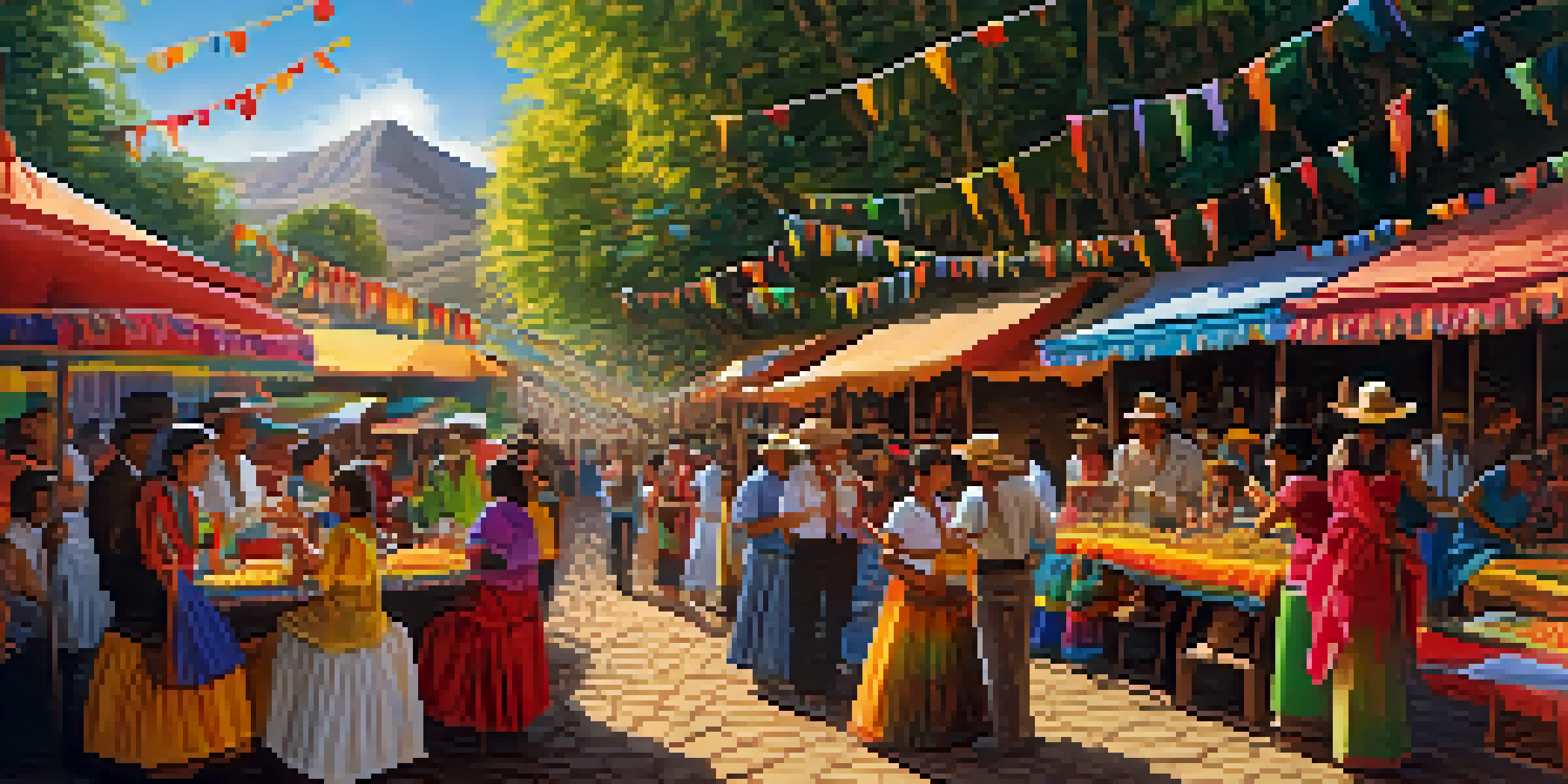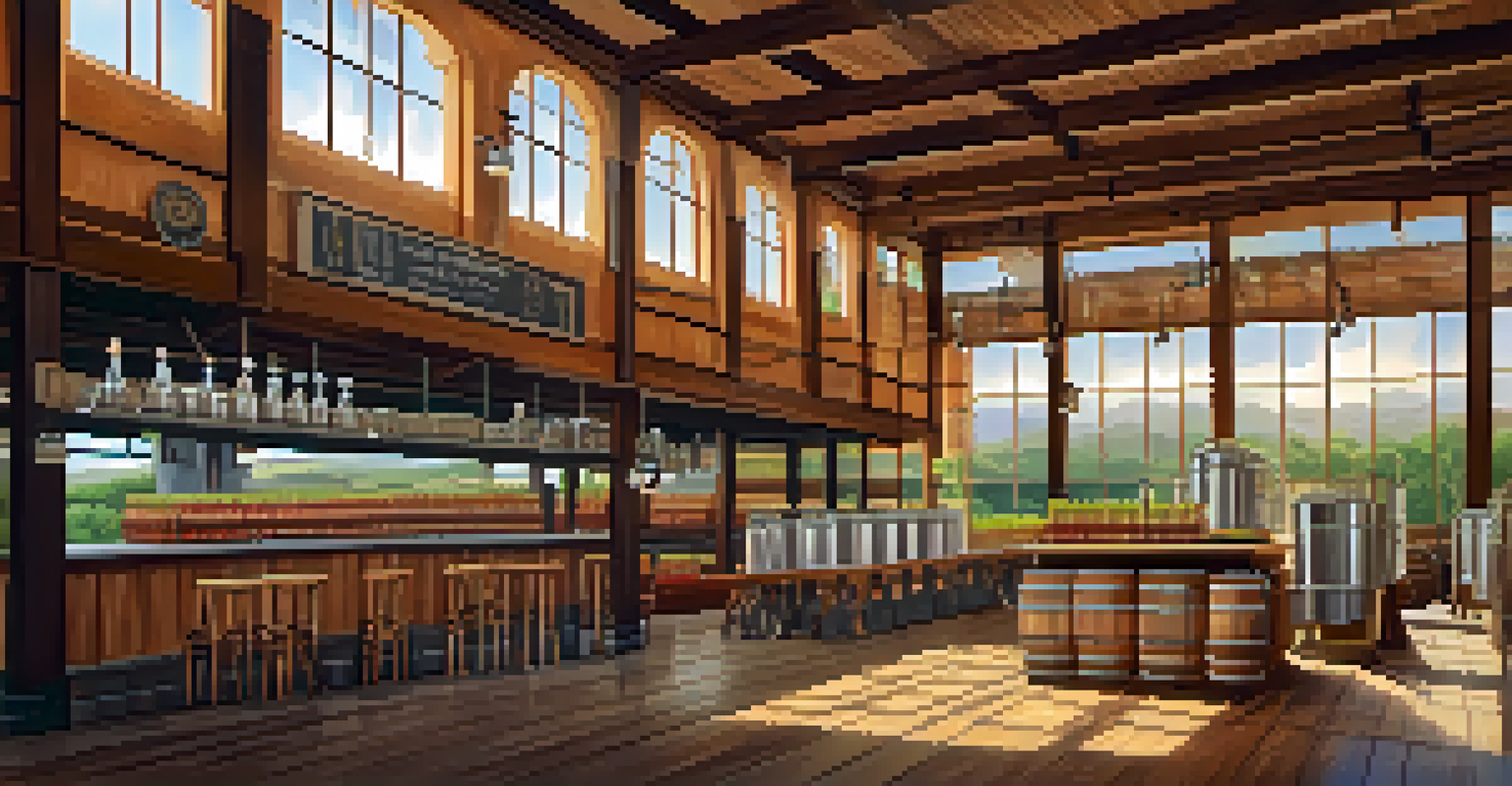The Evolution of Beer Styles in Peru: A Historical Overview

Ancient Roots: Beer in Pre-Columbian Peru
Long before the arrival of Europeans, the ancient Peruvians brewed a fermented beverage called chicha. Made primarily from corn, chicha played a vital role in rituals and daily life, highlighting its cultural significance. This early form of beer was often flavored with fruits, herbs, and spices, giving it a unique taste that varied by region.
Beer is proof that God loves us and wants us to be happy.
Chicha was not just a drink; it was a social glue that brought communities together during celebrations and feasts. The brewing process was often communal, emphasizing cooperation and shared traditions. As a staple in Andean culture, chicha laid the foundation for the beer culture that would evolve in Peru.
Despite the introduction of European brewing techniques, the legacy of chicha remains strong. Today, many breweries are experimenting with chicha-inspired recipes, showcasing Peru's rich heritage while appealing to modern palates.
Colonial Influences: The Introduction of European Styles
The arrival of Spanish colonizers in the 16th century brought new brewing techniques and ingredients to Peru. European settlers introduced barley, hops, and different fermentation methods, transforming the local brewing landscape. This period marked the beginning of a fusion between indigenous practices and European brewing traditions.

As the demand for beer grew among colonizers, local breweries began to adapt to these new influences. The emergence of pale ales and lagers reflected this blending of styles, paving the way for a more diverse beer culture. This evolution was crucial in shaping Peru's distinct beer identity.
Chicha: A Cultural Beer Legacy
Chicha, a traditional corn-based beverage, played a crucial role in pre-Columbian Peru, serving as both a daily staple and a communal bonding agent.
While traditional chicha remained popular, the colonial era set the stage for the creation of new beer styles. This era of experimentation would eventually lead to the unique craft beer movement that we see today in Peru.
The 19th Century: Industrialization and Mass Production
The 19th century marked a significant turning point in Peruvian beer production, driven by industrialization. With advancements in brewing technology, larger breweries began to emerge, producing beer on a scale that was previously unimaginable. This mass production made beer more accessible to the general population.
The best beers are the ones we drink together.
During this time, lagers gained immense popularity, largely due to their crisp taste and refreshing qualities. Notable breweries like Cerveza Arequipeña and Cerveza Cristal began to dominate the market, establishing a foundation for Peru's beer industry. These brands became household names and contributed to the growth of beer consumption across the country.
However, this era was not without challenges. The rise of mass-produced beer often overshadowed local brewing traditions, sparking a desire among some to return to the artisanal methods of the past.
Craft Beer Revolution: A Return to Artisanal Brewing
The late 20th and early 21st centuries witnessed a craft beer revolution in Peru, as brewers began to embrace artisanal methods and local ingredients. This movement was fueled by a growing interest in unique flavors and quality over quantity. Small, independent breweries started popping up, each with its own distinct style and philosophy.
This resurgence of craft beer allowed brewers to experiment with traditional recipes while incorporating local ingredients, such as quinoa and various fruits. The result was a diverse array of styles, from IPAs to stouts, reflecting Peru's rich biodiversity. Consumers were eager to support these local endeavors, creating a vibrant craft beer community.
Craft Beer Movement Revives Tradition
The resurgence of craft breweries in Peru has led to a revival of artisanal brewing methods and local ingredients, creating a diverse beer culture.
As the craft beer movement gained momentum, beer festivals and tastings became popular, fostering a culture of appreciation for quality beer. This shift not only revived traditional brewing practices but also positioned Peru as an emerging player in the global craft beer scene.
Regional Variations: The Influence of Geography
Peru's diverse geography has a profound impact on its beer styles, with different regions showcasing unique ingredients and brewing techniques. For instance, coastal breweries often focus on lighter styles, like pilsners, which pair well with the region's seafood cuisine. In contrast, the highlands may produce richer ales that complement hearty Andean dishes.
Each region has its own brewing traditions, reflecting the local culture and available resources. The use of native ingredients, such as coca leaves or Amazonian fruits, adds an exciting twist to traditional recipes. This regional diversity not only enriches the beer landscape but also highlights Peru's cultural and agricultural heritage.
As consumers become more adventurous, many breweries are tapping into these regional flavors, crafting beers that tell the story of their origins. This trend is helping to foster a stronger sense of identity within Peru's beer community.
Modern Trends: Sustainability and Innovation in Brewing
In recent years, sustainability has become a key focus for many Peruvian breweries. With increasing awareness of environmental issues, brewers are exploring eco-friendly practices, such as using renewable energy and sourcing local ingredients. This commitment to sustainability not only benefits the planet but also resonates with consumers seeking responsible brands.
Innovation is also at the forefront of the Peruvian beer scene, with breweries experimenting with new styles and flavors. Collaborations between local artists, chefs, and brewers have led to unique beer pairings and events that celebrate both food and drink. This creative spirit is helping to elevate Peru's beer culture on the global stage.
Sustainability Shapes Future Brewing
Peruvian breweries are increasingly focusing on sustainability and innovation, reflecting a growing consumer demand for environmentally responsible practices.
As the industry continues to evolve, the integration of technology in brewing processes is also gaining traction. From advanced brewing equipment to digital marketing strategies, modern breweries are adapting to meet the demands of a changing market, ensuring a bright future for Peruvian beer.
The Future of Peruvian Beer: Trends and Possibilities
Looking ahead, the future of Peruvian beer is bright and full of potential. With the craft beer movement still gaining traction, there is an increasing demand for innovative and diverse beer styles. As more people become interested in exploring local flavors, breweries will continue to adapt and evolve their offerings.
The rise of beer tourism is another exciting trend, with more visitors seeking to engage with Peru's brewing culture. Brewery tours, tastings, and events are showcasing what makes Peruvian beer unique, attracting both locals and tourists alike. This focus on experience will likely play a significant role in shaping the industry's future.

Ultimately, the evolution of beer styles in Peru reflects a rich tapestry of history, culture, and innovation. As brewers continue to push boundaries and experiment with flavors, the world will be watching as Peru carves out its place in the global beer landscape.